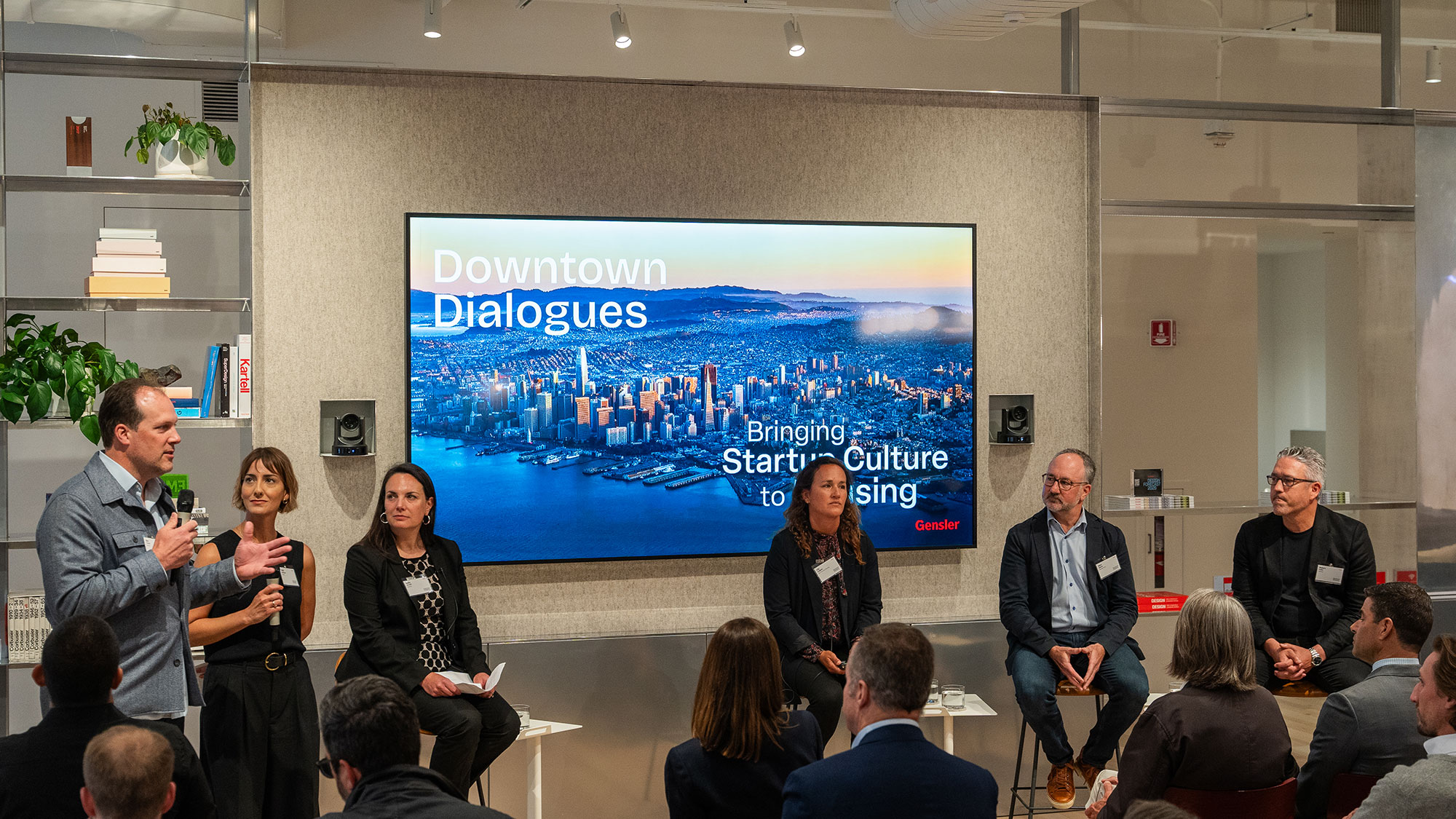How San Francisco Can Apply Startup Culture to Unlock Housing Solutions
We explore four strategies to bring iterative, bold approaches to address the city’s housing shortage.

As the epicenter of innovation — and the recipient of a remarkable $60B in VC funding year-to-date — San Francisco is primed to showcase its identity of invention once again and help solve one of the city’s most pressing issues: housing.
To bring vibrancy back to our downtown core and provide 24/7 activation, solutions like office-to-residential conversions have been explored extensively for several years. Gensler is committed to this work, partnering with local city officials and partners to introduce transformative solutions. We authored a joint study on the feasibility of such conversions and began work on a project that has been credited with driving these changes to policy and is helping pave the way for continued momentum — but recent changes in San Francisco’s planning codes and new legislation give developers, landlords, lenders, and designers the opportunity to push the boundaries even more.
Meaningful changes in housing development will take the collective effort of each of these stakeholders. As we define what comes next, below are four ways we can mirror the startup mindset for which San Francisco is so well-known to unlock new housing solutions:
1. Adapt, adapt, adapt.
Adaptation and experimentation — and a commitment to learning through iterative changes as we go — is essential to addressing the housing crisis in San Francisco and beyond. By identifying the barriers to success and working with the right teams, we can find our way to developing creative housing solutions.
With San Francisco’s building vacancy rate sitting at roughly 35%, there is no shortage of buildings to evaluate for conversions. Many of the buildings we eye for conversions have incredible architectural character but are unlikely to ever return to Class A office use. While each structure has its own set of unique challenges and opportunities, choosing the right building at the right moment and in the right location is critical.
With so many vacant buildings available, greater momentum behind planning changes means we can take a more proactive and efficient approach — both in our research and in developing new project ideas.
Speaking at an event on the future of downtown housing that we recently hosted at our San Francisco office, Lily Langlois, Principal Planner at S.F. Planning, shared how her department is working to broaden the pool for conversion proposals.
“Downtown zoning allows for housing, as well as a wide availability of commercial uses, and we’ve passed legislation that streamlines the approval process for downtown projects,” Langlois said. “These are small changes, but cumulatively, they remove barriers to give projects flexibility.”
The city’s changes began with the removal of smaller planning code requirements that posed problems for conversions (like open space and exposure requirements) and most recently include San Francisco's new Adaptive Reuse Program. Just as startups operate, an iterative and phased approach to conversions will prime the city for long-term success.
2. Leverage the power of incentives.
While addressing and removing regulatory barriers is a great start, it’s just one piece of the puzzle. Financial barriers often stop projects before they start, which makes incentives even more critical. Assembly Bill 2488, which was passed in September 2024, paved the way for the City and County of San Francisco to create a Downtown Revitalization and Economic Recovery Financing District to finance office-to-residential conversion projects using incremental property tax revenues.
In June, Mayor Lurie signed new legislation that formally created the Financing District, aimed at boosting conversions via a creative financial tool. Through this district, the city can waive certain fees and lay out an implementation roadmap. The district will reinvest future incremental property tax revenues into conversion projects to offset development costs and make them financially viable.
Robert Fuller, a principal in Gensler’s New York office who also spoke at our office-to-residential event, discussed the power of incentives in his most recent conversion projects, which total more than 6,000 units at various stages of design and construction. He noted that putting time limits and setting deadlines on incentives has been incredibly effective in accelerating market entry in New York by rewarding early adopters.
3. Solve the math problem to make projects pencil.
For a revitalized San Francisco to reach its full potential, downtown needs to be established as a place where people can work, play, live, and study. We must experiment with multiple approaches at once, and with great urgency, as Ned Segal, Chief of Housing and Economic Development for the City of San Francisco, said at our office-to-residential event.
“We know that the math didn’t work for conversions, so we went after things like the inclusionary requirement, transfer and property taxes, and how to best utilize ground floors of conversion candidates,” Segal said. “Our hope is that through new legislation, the math will work now, and we’re going to see more of these buildings advance in the planning process.”
Babsin agreed that the math problem is difficult to solve, noting that the value of the building is often less than what is required to reimagine it. The key to solving this issue is finding the right opportunity. As in the startup world, the most successful partnerships happen at the confluence of the right timing and the right circumstances, with investors who are willing to take risks.
Speed to market is another important factor in attracting capital partners. A phased approach to occupancy, as the development team laid out for the Pearl House conversion project in New York, allowed investors to begin seeing returns before construction was fully completed on the project.
While the conversions process may not be as flexible as it is in places like New York, ongoing legislative efforts in California and San Francisco are gradually creating a more favorable landscape for conversions, bringing the city closer to making conversions feasible.
In San Francisco, construction costs are still too high, but rents are not high enough to make things pencil. We also know that rents are inching back up, but what can we do about construction costs? How can designers and developers work with our general contractor partners to help create design and construction strategies that keep costs at a level workable for proformas? We can standardize kitchen types and bath types. We can use prefabricated millwork in place of drywalled closets. These solutions just scratch the surface; there is so much work we can do together to push our designs to a place where budgets start to make sense.
4. Secure the necessary investments.
Just as startup founders pitch the value of their ideas and seek sustained financial backing, developers must convey the importance of these projects to ensure lenders are completely bought in. As Babsin notes, investments need to go beyond the baseline requirements for successful conversions, demonstrating a commitment to additional upgrades that will attract modern-day users.
Ultimately, the key to securing investments from both a startup and housing perspective comes down to underscoring the value of amplifying unique differentiators, benefits, and impact of these projects to a wider audience, beyond those who are currently building them.
As San Francisco remains a leading market for VC investments, all players in the development ecosystem have unprecedented opportunities to revitalize distressed buildings. Drawing on the countless groundbreaking and world-changing inventions that originate in this city, the billions in venture capital flowing through San Francisco can be poured into innovative solutions that can solve real-world problems.

For media inquiries, email .










